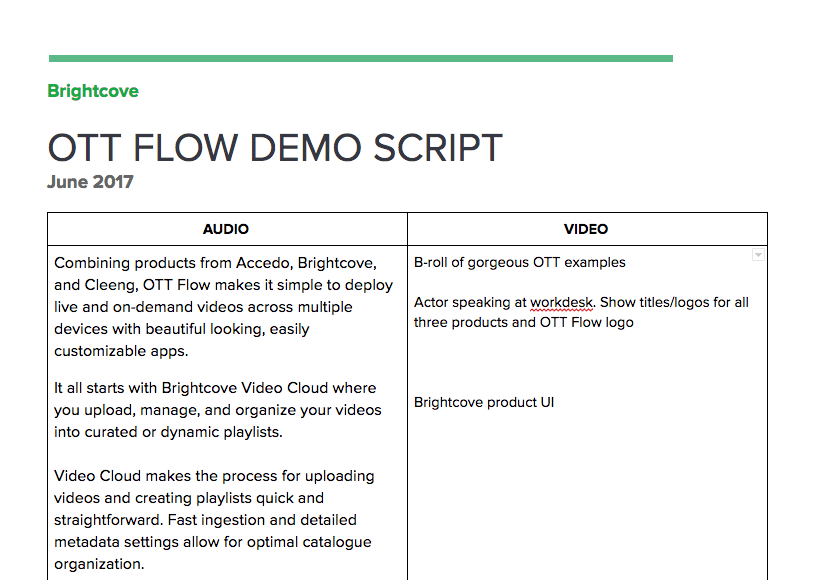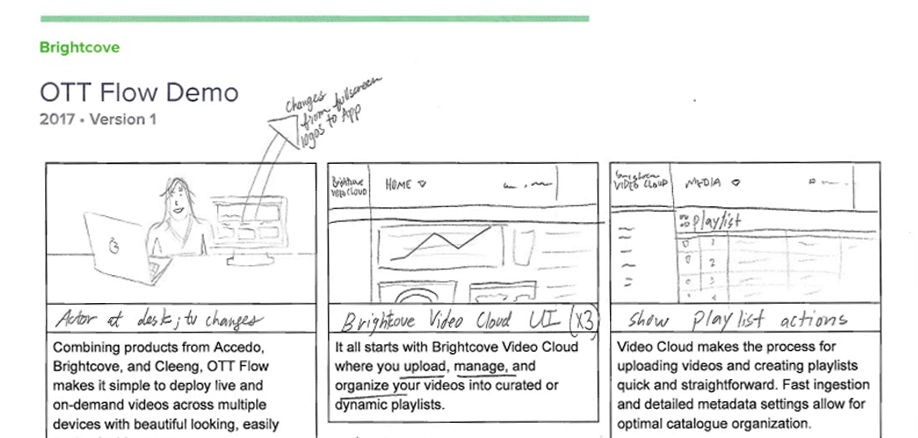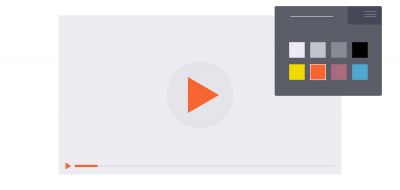Video creation and production can be a little intimidating. But it’s crucial to your marketing strategy to use video to promote your company, product, and services. Just like booking a vacation or hitting your quarterly goals, everything becomes easier with planning and preparation.
The same goes for videos. They become easier to shoot and produce when you start the process with a well thought out video script. Putting your ideas and words to paper will help you explain your vision for the video and execute it when the camera starts rolling. Plus, you’ll avoid headaches during production and endless rounds of revisions.
You don’t need to feel the pressure to write a script like Sorkin or Scorsese. Instead, just focus on these three elements. Here’s my process for writing a killer video script every time.
1. DEVELOP A CLEAR PLAN AND STORY
Before you jump into writing your video script, host a brainstorm session with your team. This is when and where your creativity should start churning. First, identify the goal of your video. Then follow the six pillars of video storytelling to identify the plot, purpose, people, place, audience, and distribution of your video. You and your team should ask the following questions during your brainstorm:
- What is the goal of the video? What story do we want to tell?
- Why are we telling this story? What do we want people to do when they watch it?
- Who are the people in the video?
- Who is the intended audience for the video?
- Where will we shoot the video? What visuals do we want to use?
2. SHOW DON’T TELL
After creating the plan, story, and setting for your video, it’s time to sit down in the writer’s room and get to work. As you are writing your video script, you’ll want to think visually. Ask yourself — which images and shots will accompany the audio of this video?
THE TWO-UP SCRIPT
The best way to write visually is by creating a two-up script. The two-up script has one column for the audio in the video and another column detailing the visuals to accompany each line of audio. This approach, which I regularly use when script writing, allows you to envision what is going to happen in the video alongside the words.
THE STORYBOARD
Your two-up script can be easily transformed into a storyboard. Storyboards are not always necessary but can be very useful when you have to explain the video concept to multiple stakeholders involved in the video production process. Visuals are processed 60,000 times faster than text, which means you can describe your vision much easier with actual images. So use a storyboard to your advantage when you are collaborating with many people in your company.
THE SHOT LIST
On shoot days, I always use a shot list. The shot list is a document that maps out exactly what will occur and what will be used in that particular shot, or scene, of the video. It helps me stay organized and on task while recording so I capture everything as outlined by the script. I literally could not live without this.
If you don’t already use this crucial tool, download my video script shot list template here.
3. BE BOLD EARLY ON
Through your brainstorming and planning process, you’ll identify the audience of your video. With this targeting, you also need to identify the action you want them to take after watching your video. It’s a common approach to place your call-to-action at the end of the video, like a big finale on the silver screen, but I don’t recommend this.
Instead, you should be bold at the beginning of your videos. This can be in the form of a question or with a clear statement within the first 5-10 seconds of the video. After you make that initial impact, you can transition your script to entertain and educate the viewer. Finally, you can reinforce the action of your video at the end of the video.
Write your scripts with this strategy in mind and always ask: What do you want the viewer to learn if they only watch the first 10 seconds of the video? Which action do you want them to take before they decide to keep scrolling on their feed?
Next time you sit down to write a killer video script, remember to make a plan before you put pen to paper, show what you want to say, and be bold in your delivery. Who knows — maybe you will become the next Scorsese.






